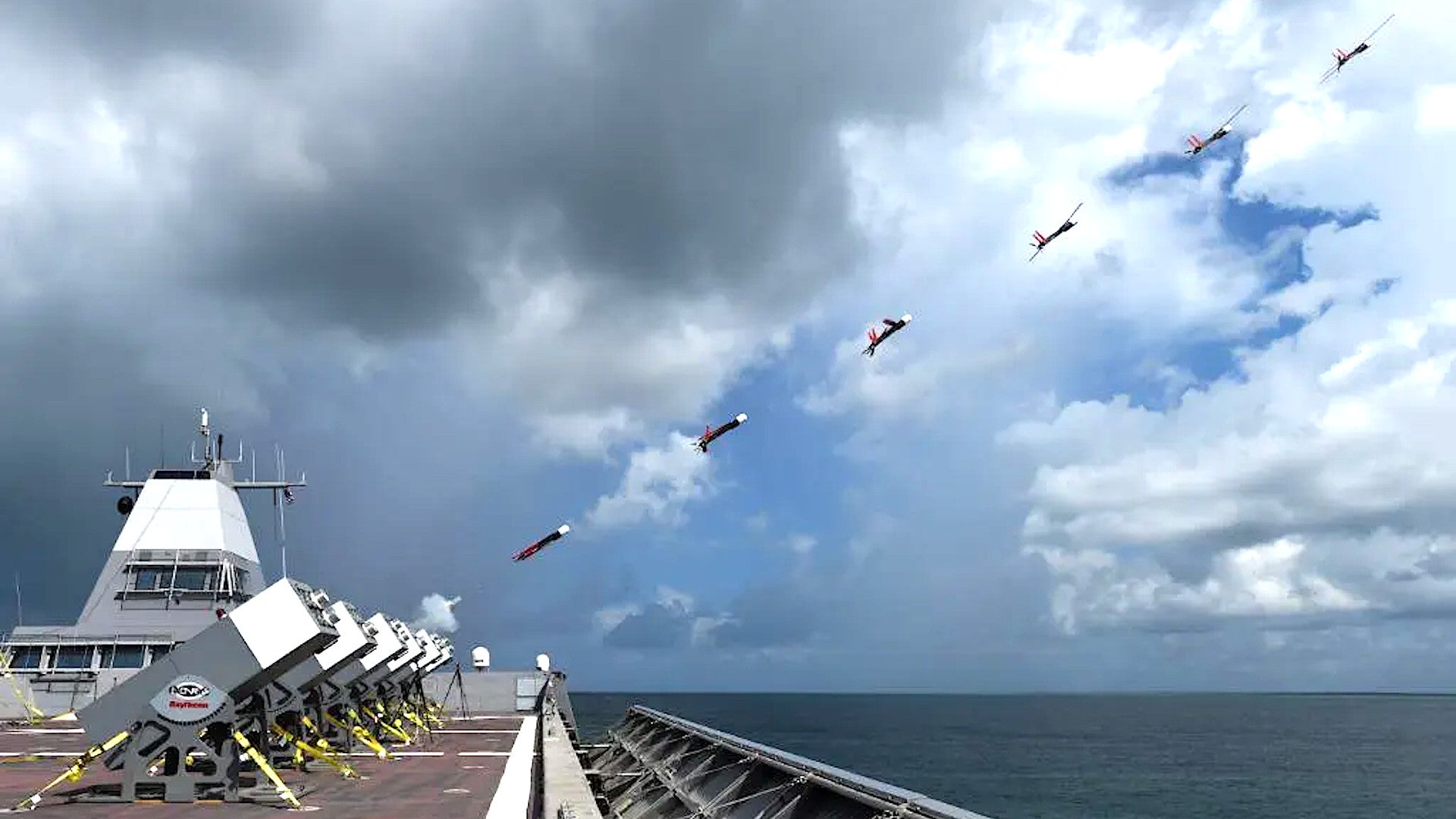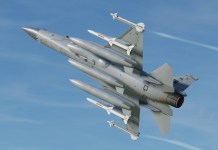After showcasing swarm drone technology, China has now developed a naval platform to train its forces to defend against drone swarm threats. Drone swarm is a concept of deploying a cluster of small unmanned aerial vehicles (UAVs) in hostile airspace.
The idea is to confuse the enemy radar, thus enabling the drones to successfully conduct their assigned reconnaissance or other tactical support missions.
Earlier, as EurAsian Times reported, China conducted a test involving a swarm of loitering munitions or suicide drones, deployed from tubular launchers.
The China Academy of Electronics and Information Technology which is a subsidiary of the state-owned China Electronics Technology Group Corporation carried out a massive drone swarm experiment in June 2017, involving nearly 120 UAVs. Later, it demonstrated its prowess with nearly 200 fixed-wing drones.
It is pertinent to mention that warships are particularly vulnerable to drone swarm attacks. In 2019, a number of US Navy destroyers had been swarmed by drones over a period of many nights, Popular Mechanics previously reported. Even by April this year, the US Navy was unable to identify these drones or their operators.
On their own, drone swarms are known for their inherent ability to confuse and overwhelm an adversary’s defenses. This makes it very difficult for the opponent to prioritize threats and allocate its own resources in an effective manner.
Additionally, a networked drone swarm provides great flexibility to its operator as a single UAV is not responsible for conducting the various mission sets. Instead, the task is distributed among the entire cluster of these UAVs.

These capabilities hold true in maritime conflict scenarios as well. A drone swarm is easily capable of launching a series of attacks on multiple ships and that too from different vectors at once.
A drone with a warhead relatively smaller in size can easily achieve a kill by attacking one of the key systems on a ship, such as its radars or communication arrays. This disrupts the ships’ combat utility and thus makes them more vulnerable to follow-up attacks.
China’s Mothership
To counter these threats, China had devised a different plan. According to reports, China has built a kind of a “mini” aircraft carrier capable of launching and recovering UAVs. Images of this catamaran ship were also shared during the Zhuhai Air Show that concluded on October 3.
A catamaran is a vessel, which has twin hulls placed parallel to each other. The Chinese vessel was described as a platform capable of “mimicking” the enemy’s electronic systems during training drills.
The 80m-long and 35m wide ship will be capable of simulating hostile drone swarms and other threats such as high-volume anti-ship missile strikes and electronic warfare attacks. Photographs of the vessel started doing rounds on social media earlier this week. Reports suggest that this drone swarm mothership was launched sometime in May this year.
A part le "porte-avions" sur rail au désert du Taklamakan, qui est en réalité une plateforme de simulation OPFOR au sol, il existe une autre du même genre mais sur mer, qui a été mise à l'eau le 4 Mai cette année.
Il mesure 80m de long et 35m de large. pic.twitter.com/7jy05jfVug
— East Pendulum (@HenriKenhmann) November 9, 2021
The photographs show a cartoon shark painted on the outer side of the ship’s twin hull. This made the ship very similar to the model displayed in Zhuhai. It is believed the state-run China Aerospace Science and Industry Corporation (CASIC) is involved in the development of the ship.
From the photographs, it is very evident how the ship is going to be employed in maritime exercises. For conducting a realistic drone swarm training exercise, it will be required to release a cluster of drones at once.

Rotary-wing drones will also be equipped with electronic warfare equipment for conducting electronic attacks. All these steps can in turn offer a low-cost way of simulating swarms as well as other airborne threats, and that too over a large area.
A large open deck is present in the front and at the back of the ship’s superstructure. This could accommodate additional equipment such as catapults or static launchers for fixed-wing drones, The War Zone reported.

Small drone carriers which operate in coordination with larger and more extensive drone surface action groups are believed to be of great use in disrupting the enemy’s maritime operations, both at sea and in the air during a real-time conflict situation.
A ship such as this one can release drones either ashore or in the air, thus creating chaos in the enemy’s air defenses. This would enable more traditional capabilities to come into play.
At the same time, the possibility of this ship being a stepping stone to actual operational capability cannot be ignored. In the past few years, China has made tremendous advancements in its development of drone swarm capabilities.
Nevertheless, this “mini aircraft carrier” shows China’s commitment to building its naval capabilities for countering the various threats it faces.
- Written by Kashish Tandon/EurAsian Times Desk
- Contact the author at: kashishtandon21@gmail.com
- Follow EurAsian Times on Google News




